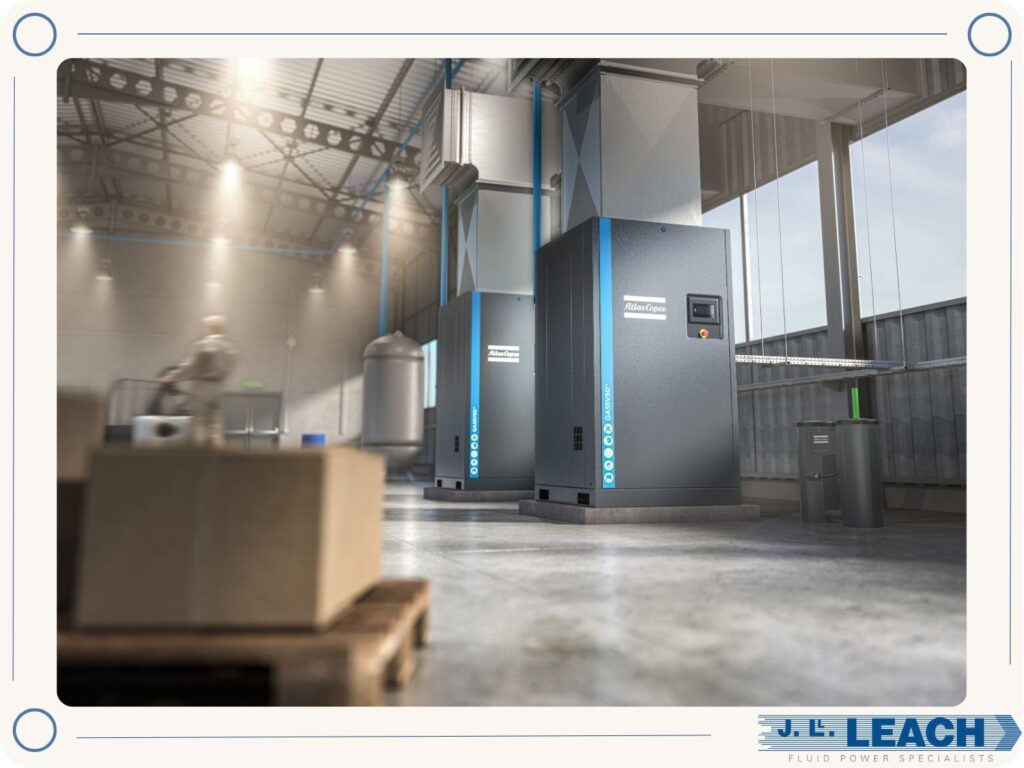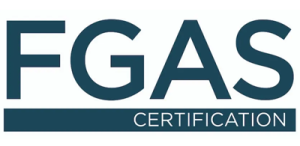VSD air compressors have seamlessly integrated into the modern manfucturing landscape. Users value their ability to respond to demand and reduce energy costs while placing less stress on compressed air systems. They are a cost-effective and sustainable way to meet compressed air requirements.
They are, however, a relatively recent innovation in compressed air. Atlas Copco only released the world’s first commercial variable-speed-drive compressor in 1994. What led to this development of compressor technology, and why did it take so long?
Table of Contents
A brief history of compressed air
Air compressors have been with us for a long time. The use of bellows in medieval forges is, perhaps, the precursor of compressors. Even though they were human-powered, they served a purpose that some air compressors still serve today: blowing air to help accelerate a process.
In the 18th and 19th centuries, what we would recognise as a modern air compressor was first developed. At first, these were largely confined to laboratories, where air pumps were used for experiments. By the late 19th century, however, the modern air compressor was born. Steam-driven air compressors could transmit power over networks, helping create the Industrial Revolution.
Perfecting compressed air
The basic air compressor has been with us for more than 100 years and has remained largely unchanged – long after the technologies and practices they developed alongside had fallen into disuse. A compressor from the 1980s might be smaller, more efficient, and more powerful than one from the 1880s, but one thing remained the same: it only had two speeds, on and off.
Several factors contributed to this. One was that there was little demand for anything else. Earlier uses of compressed air often focused on powering equipment that was in use most of the time, so there was little need for variable speeds. Energy was more affordable – fossil fuels were plentiful – and concern about the environmental impact of energy use was limited.
But, there was also a technological barrier. Alternating current (AC) induction motors, which allowed for control over speed, had been developed by Nikola Tesla, but using them operationally was a different matter. In the latter part of the 20th century, the quality of the motors – especially their ability to rapidly change speed, along with improvements in sensor technology – made a VSD air compressor a practical reality.
The first VSD air compressor
The industry was ready when Atlas Copco launched its first VSD air compressor. Industrial processes had moved on and became more sophisticated, and many businesses recognised that they were generating compressed air that was being wasted. That meant that money was being wasted, too.
The problem with fixed-speed compressors is that they have to operate at the level of peak demand. If not, tools may be underpowered or simply not operate when needed. Meanwhile, excess pressure is required to be released – a process known as ‘blowdown’ – wasting time and money dealing with unused compressed air.
Atlas Copco’s first variable-speed-drive compressor changed all that. The value was evident after two decades of research and development when it became commercially available. The VSD technology was responsive, and users started to see savings quickly. Early customers found their energy costs were reduced by around 30%.
It was only a short time before VSD air compressors were in high demand.
More innovation
Naturally, the development of VSD air compressors has continued. Further research has increased their efficiency. Sensor and motor technology have been a significant part of this – greater energy efficiency and more responsive motors are matched with increasingly precise sensors.
VSD compressors have also taken advantage of advances in technology elsewhere. The internet was just starting to enter the mainstream when the first VSD air compressor was introduced. Now, it is integrated with compressors that can offer real-time, remote monitoring.
Atlas Copco’s VSD+ range is an example of this. The internal mechanisms are designed with fewer parts – there are no gears or couplings – increasing efficiency and reliability. They never run in an unloaded condition and, because of the motor’s high torque, can start under pressure, eliminating the need to blow off the pressure. Combined with Atlas Copco’s Airlogic2T controllers and SMARTLINK, they can be monitored and optimised anywhere in the world.
Having introduced savings of around 30% with their first VSD air compressor, their new VSD+ range offers users an average of 50% in energy savings.

The future of VSD air compressors
VSD compressors have been widely adopted for decades since they were first introduced. They are particularly popular in sectors like food and drink, and pharmaceutical production where their ability to produce clean, highly controllable compressed air has become essential in various production processes. Any use that needs a variable supply of compressed air can benefit from a VSD compressor, therefore, manufacturers continue to develop and improve their range.
Further integration of compressors and compressed air systems with the Internet of Things (IoT) is certain. As components come down in price, size, and accuracy, their ability to monitor systems and offer early problem detection means that new ranges will likely offer more significant savings by enabling rapid preventative maintenance.
Artificial Intelligence (AI) and machine learning are also likely to play a bigger role in compressed air. With many businesses already seeing the benefits of data collection from audits and their monitoring systems, AI is an obvious next step – allowing levels of analysis of compressed air use and changes that simply are not possible otherwise. It might mean that air compressors will appear to have a sixth sense in a few years, getting themselves ready for air demand before the users themselves know they need it!
Choosing the right VSD air compressor
Just like with traditional fixed-speed air compressors, it is crucial to choose the VSD air compressor that is right for you. It is important to consider the size and power of an air compressor based on your specific requirements. Conducting an audit can help determine the exact level and range of your needs, which can then be matched with the appropriate air compressor.
You should also think about the future. This is not just about your compressed air requirements, but also about how compressed air systems will develop. Ranges like Atlas Copco are highly adaptable so that systems can be easily upgraded, and your compressor choice will not restrict you.
If you need assistance with your compressed air systems, J Ll Leach is here to help. With decades of experience, we can provide you with various services, such as a quick chat to discuss your needs, an audit to help you make informed decisions, or even design a complete system to ensure you are getting the most out of your compressed air systems. Just get in touch.












